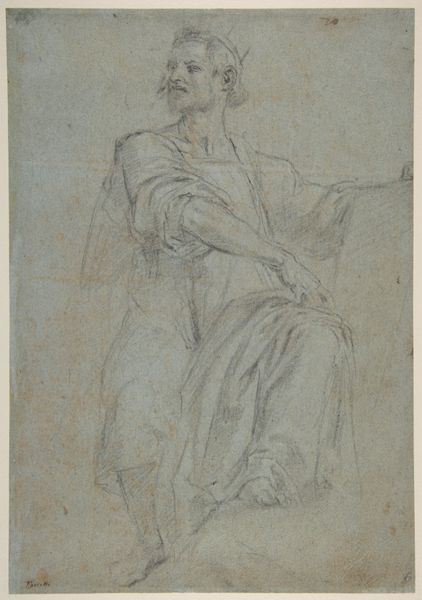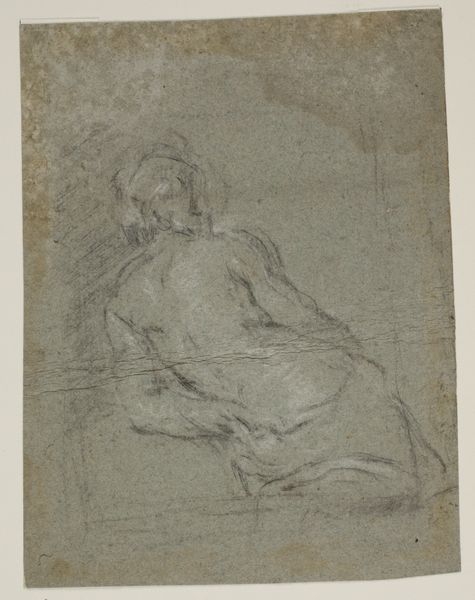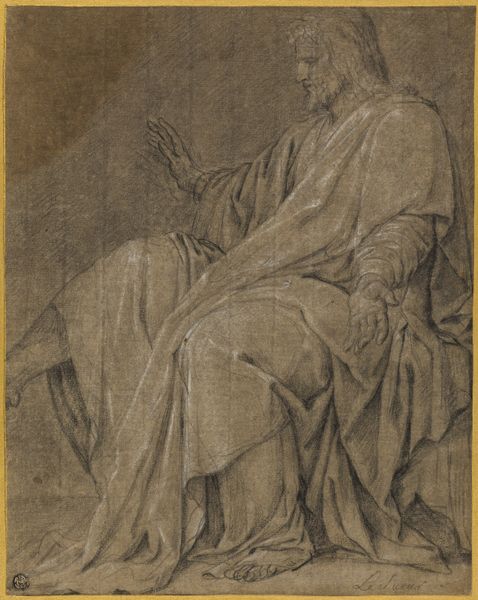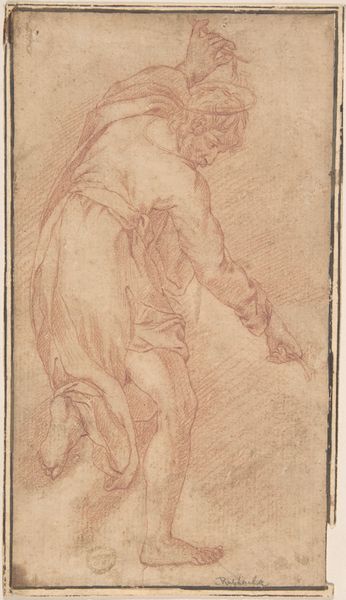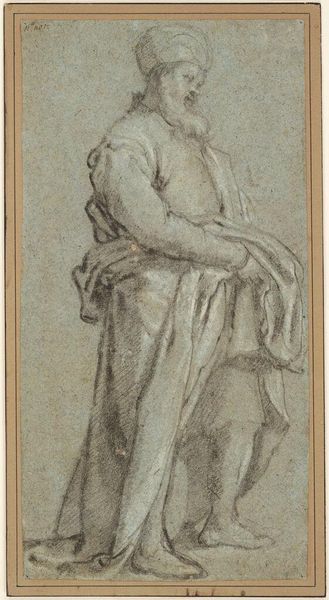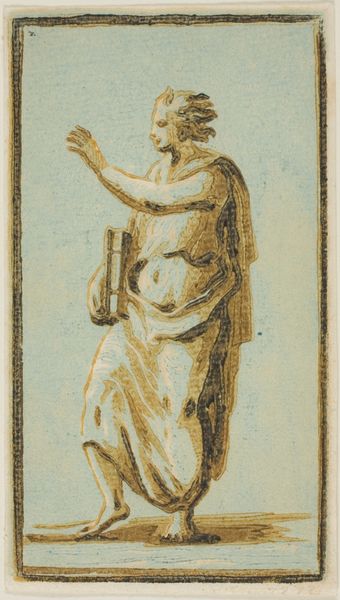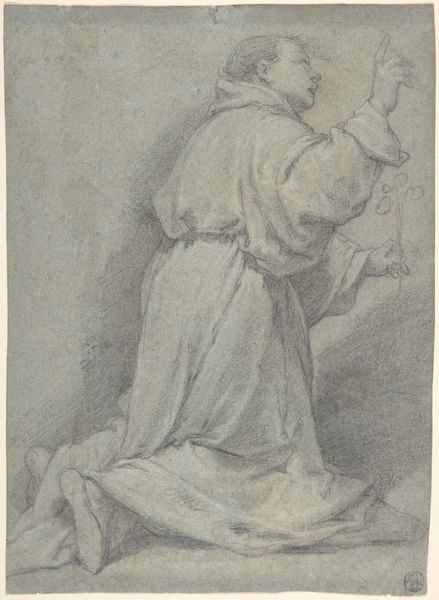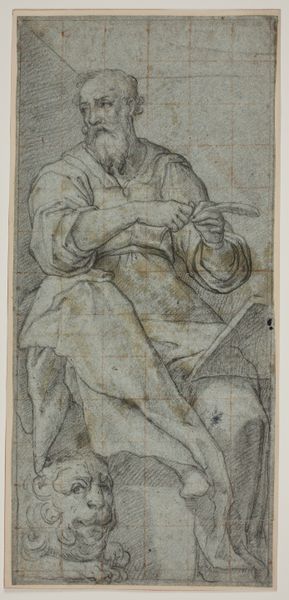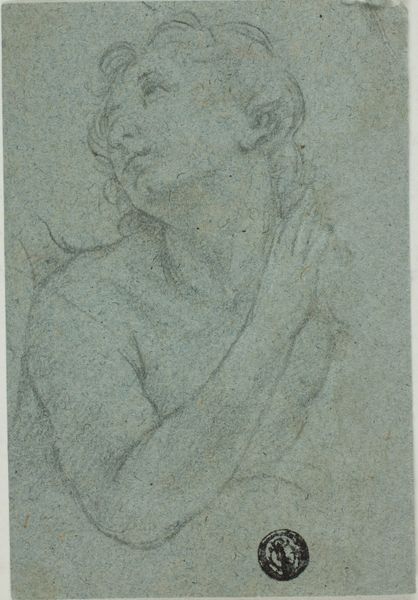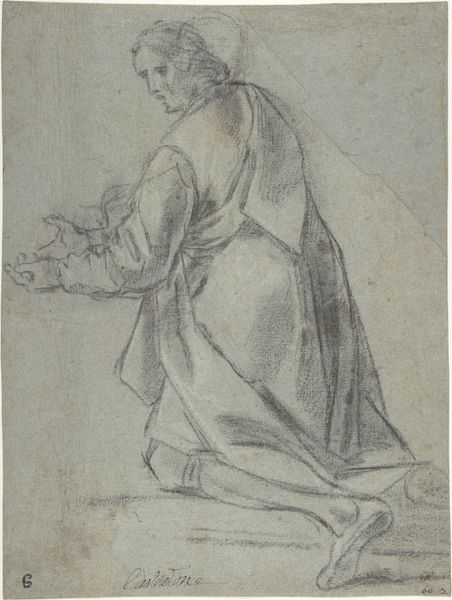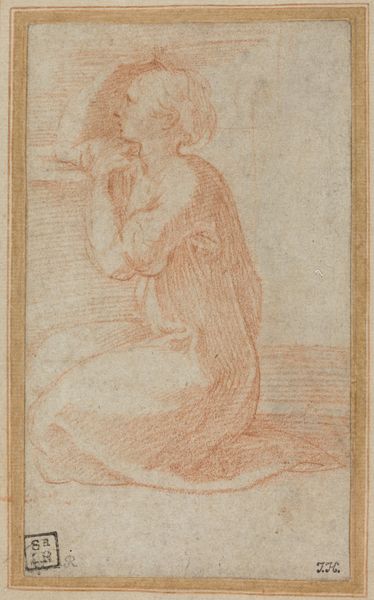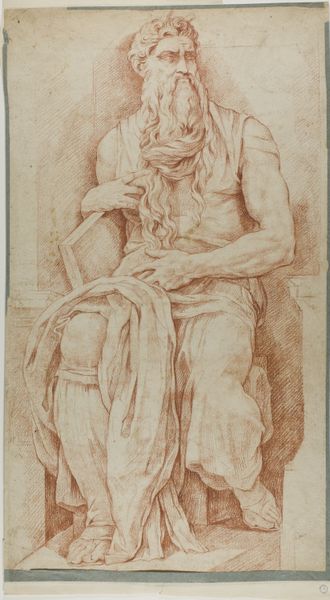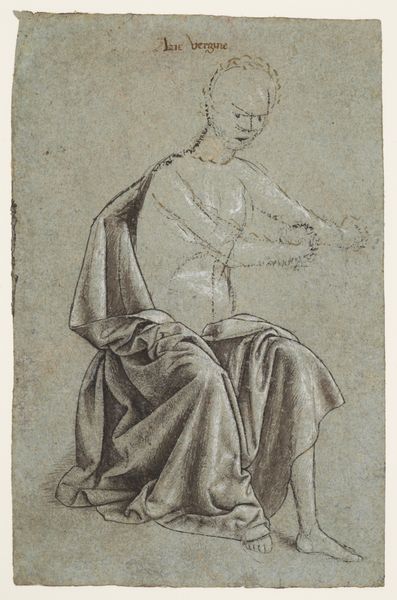
A Seated Apostle (recto); Drapery Study (verso) 18th century
0:00
0:00
drawing, print, pencil
#
drawing
# print
#
charcoal drawing
#
pencil
#
academic-art
Dimensions: sheet: 6 1/4 x 5 1/16 in. (15.9 x 12.9 cm)
Copyright: Public Domain
Curator: Here we have an 18th-century drawing titled "A Seated Apostle," although on the reverse, there's a "Drapery Study," so it served perhaps as a sketchbook page for the artist. Editor: It's interesting how the blue paper lends a somber, almost ethereal feel to the piece. The figure is heavily draped, with his face cast downward. I wonder what occupies his thoughts? Curator: Considering the social and cultural context, artists often created such studies for larger, commissioned works for churches and wealthy patrons. The apostle, if that’s indeed the subject, embodies contemplation, an idealized figure. Editor: Yes, that downward gaze suggests piety, reflection. I can't help but think about the construction of religious authority and the representation of its figures, how these depictions can influence perceptions of faith. Is he a source of comfort or a figure burdened by responsibilities? Curator: Well, drapery studies like the one mentioned on the back of the sheet were crucial. They helped the artist understand light and shadow and to give form and depth to the figures that are generally common during that time. Editor: The economy of lines is impressive. I wonder what kind of statement the artist wanted to achieve by utilizing an economy of lines as such. What kinds of meanings he wanted to convey? It almost has an unfinished look about it that only amplifies a raw, powerful human experience. Curator: Such works on paper gave agency to artists who found themselves under increasingly authoritarian structures. Many began to challenge established academies by representing the divine in an honest and humble way, humanized as in our work here today. Editor: Ultimately, the figure seems frozen, both temporal and permanent, beckoning critical engagement. What do you feel our viewers are meant to discern about themselves and their world after viewing such a rendering? Curator: I see this artwork as a quiet reflection on faith and artistic practice. It reminds us of the institutions of art production, its function in shaping the status quo and evolving towards radical progress. Editor: It’s a conversation starter, compelling viewers to engage in dialogue with a moment frozen in time and to draw attention to a period marked by shifts in power, agency, and a constant questioning of existing cultural practices.
Comments
No comments
Be the first to comment and join the conversation on the ultimate creative platform.
